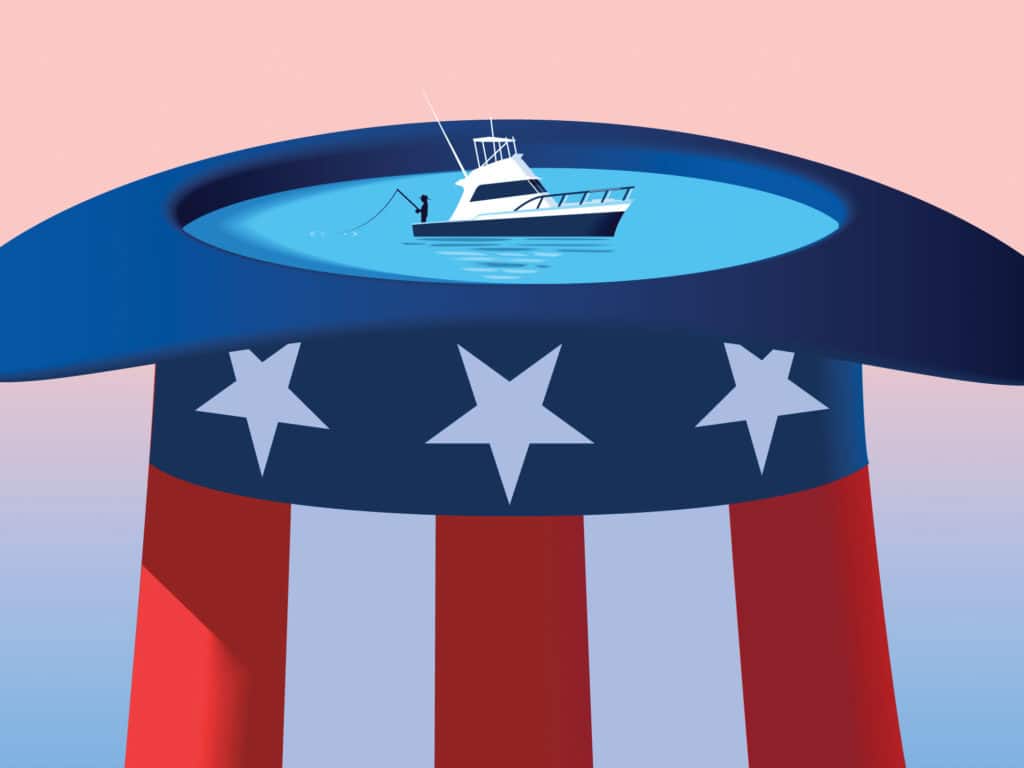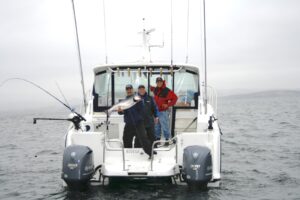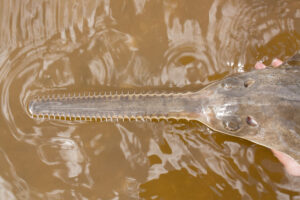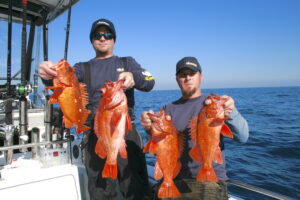
Ok, sure. This isn’t our first rodeo on the subject, and because there is a push for more, we will likely cover it again. For all of us who enjoy sport fishing, it’s important. It is about access to common-property resources.
There is a big push to lock up 30 percent of all US waters and lands. In most cases, this will take away historic access to our resources, with the questionable idea that it will benefit all users and resources alike. At least some of that theory has been proven to be incorrect.
This effort had a start with California’s Marine Life Protection Act (MLPA) in 1999. The MLPA established a network of marine protected areas (MPAs) to preserve marine resources from intrusive human activities. What is “intrusive” might be in the eye of the beholder. I am not aware of any studies that have shown fish-resource improvement related to the MLPA’s restriction on angler access. The MLPA did, however, close off angler access to many of the usual and productive fishing grounds.
Then along comes California’s new effort, AB 3030. This was an attempt to get an additional 30 percent of California waters under MPA restrictions. Initially, it did not give credit for existing MPAs. It failed to pass, but fear not. It is unlikely these efforts will simply fade away. There is now a federal effort for a 30-by-30 plan to be implemented through President Biden’s executive order. This a push to place 30 percent of US waters and lands under protection by 2030, but this effort relies on local constituency input. This is much more a bottom-up effort—a positive—but it might be guided by incorrect science.
The recreational fishing industry, as a major constituency, has determined we need to work with federal and local agencies to make sure the correct science is used by those making the decisions. Industry leaders support conservation and sound management of marine resources, and will promote the following concepts:
1. US no-fishing MPAs do not increase fishery productivity.
The science suggests no-fishing MPAs (at times referenced as no-catch MPAs, no-take MPAs or fully protected MPAs) do not produce a meaningful increase in fishery productivity in the US.
2. Proven US fisheries management does increase overall fishery productivity.
Science-based fisheries management is the key to protecting ocean fishery health. NOAA data on the fisheries’ stock status shows improving US fishery health due to effective fisheries management, which continues to rebuild stocks in our oceans.
3. Recreational anglers support biodiversity and habitat protection.
Recreational anglers understand the need to protect and conserve our fish populations and the habitat they depend on. We support 30-by-30 policies that are not merely aspirational. The policies should recognize existing management protections and work to identify additional conservation through an objective, science-driven, stakeholder-engaged process to determine the appropriate level of management action necessary to meet biodiversity conservation goals.
As efforts move ahead to craft effective policies, it is important to understand that the sport-fishing industry wants to work with the reasonable environmental community to make sure resources are protected and managed sustainably, and that the 26 percent of our US waters already under MPA status are recognized as part of the 30 percent.
Major sport-fishing organizations, like the American Sportfishing Association, International Game Fish Association and Coastal Conservation Association, and many local sport-fishing groups will be supporting the effort to move ahead with a 30-by-30 plan that does what it is supposed to do.
In a report by a number of marine scientists published in Science Direct, we learned: “Marine reserves are a promising tool for fisheries management and conservation of biodiversity, but they are not a panacea for fisheries management problems. Marine reserves, together with other fishery management tools, can help achieve broad fishery and biodiversity objectives, but their use will require careful planning and evaluation.”
So, the sport-fishing industry believes that the best path forward is to work with those who are implementing the executive order to conserve our marine resources and strengthen the resiliency of our coastal and marine habitats to climate change.
What the sport-fishing industry does not support is “feel good” closures that are not based on sound science. When it comes to MPAs as a whole, some might simply say, “Hell no!” But the time for that as an effective strategy has long passed.









